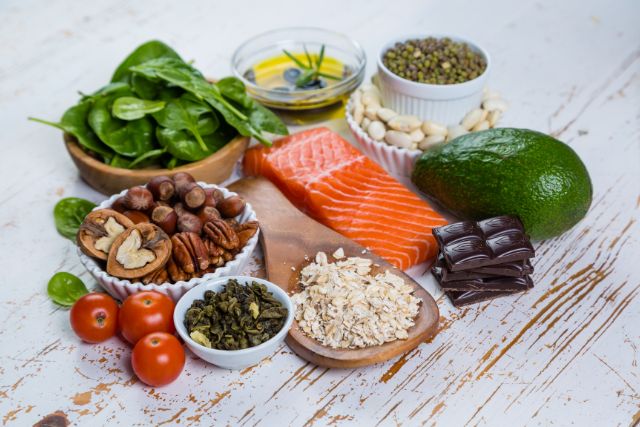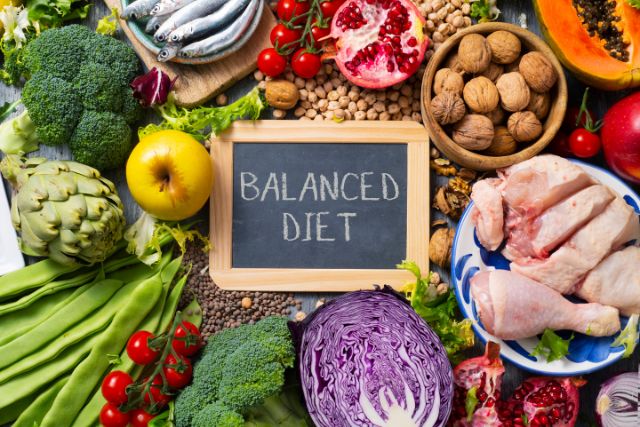Recent Posts
-

- Diabetes-Friendly Nutrition: Smart... 08.12.2024
-

- Nutrition for Chronic... 08.12.2024
-

- Anti-Inflammatory Diet: Food... 08.12.2024
-

- Low-Sodium and Heart-Healthy:... 08.12.2024
-

- Plant-Based Diets for... 08.12.2024
9 Healthy Nuts and Vegetables that Lower “Bad” Cholesterol Levels

Is good cholesterol even exist? Well, even villains in superficial stories do have their counterparts.
How can we know if what we intake in the body is considered “bad” cholesterol? Well, for starters, there are two types of Cholesterol:
- Low-density lipoprotein (LDL)
This area is also known as the “bad” cholesterol. This makes up most of your body’s cholesterol which is not flushed out and just stored within you. Your risk of developing cardiovascular disease and stroke increases when your LDL cholesterol level is high.
- High-density lipoprotein (HDL)
In another area, this is known as the “good” cholesterol. It can take in cholesterol and transport it back to the liver. After then, the liver will wash it out of the body.
Unfortunately, there are no symptoms that you have high cholesterol. One way to know if you have such a matter is when you try for a blood test and these indirect factors:
Consuming an inappropriate amount of fat may lead to dangerous levels of cholesterol in the body. Saturated fats may be found in foods like fatty cuts of meat and dairy products with total fat. Snacks and sweets that come in a packet often include trans fats.
If your body mass index (BMI) is 30 or more, you have an increased likelihood of having high cholesterol.
The "good" HDL cholesterol in your body may be increased by engaging in physical activity.
Your HDL, often known as the "good" cholesterol, may decrease if you smoke cigarettes.
Consuming an excessive amount of alcohol might cause a rise in your body's total cholesterol level.
Even very young children can have high cholesterol levels, although the condition is far more frequent in adults over the age of 40. As you age, your liver becomes less able to eliminate LDL cholesterol.
But don’t worry, as there are foods you may eat to balance and lower your “bad” cholesterol levels.
NUTS
Nuts have been seen as a food that can make a pimple grow on your face or make you cough in the worst way possible. Many people are allergic to nuts.
However, nutritionists believe that some nuts should have a prominent place in the kitchens of all people who eat healthily. Nuts are an excellent source of a variety of nutrients, including protein, fiber, and healthy monounsaturated fats, vitamins, and antioxidants. In addition, several studies have shown that eating nuts may significantly reduce blood cholesterol levels.
Due to the high-calorie content of the following nuts, it is recommended that you limit your daily consumption to no more than a half cup or a handful of nuts. Nuts are an excellent source of omega-3 polyunsaturated oil, fiber, flavonoids, and plant sterols. They provide the most significant health benefits when ingested with the saturated fats in animal products, dairy products, and even certain vegetable oils.
- Walnuts
- Pistachios
- Almonds
- Hazelnuts
- Macadamia
- Brazil nuts
- Cashew nuts
- Peanut
- Pecans
VEGETABLES
In addition to nuts, you can never go wrong with vegetables in lowering your Cholesterol. Vegetables have different minerals and vitamins that can help you achieve balanced cholesterol in the body.
Spinach is an excellent source of the vitamins, minerals, and other elements your body needs, particularly for maintaining cardiovascular health.
Because it is rich in vitamins, minerals, fiber, and other essential components, asparagus may contribute to the overall health of your cardiovascular system.
Broccoli can be prepared in various ways, is tasty, and is packed with nutrients that are good for your heart and may help you maintain a healthy cholesterol level.
Brussels sprouts' antioxidants and anti-inflammatory qualities help prevent heart disease. They're also rich in vitamin C, which keeps blood vessels healthy and decreases blood pressure.
Artichokes are abundant in fiber, magnesium, vitamin C, and beta-carotene. Vitamin K helps avoid artery blood clots.
There are compounds in cabbage that are classified as phytosterols. They are plant molecules structurally identical to cholesterol, and they lower LDL cholesterol by preventing cholesterol absorption in the digestive system. Cholesterol absorption is what causes LDL cholesterol to rise.
Consuming foods high in phthalides is one way to lower LDL cholesterol levels. Due to the presence of these components in celery, one's blood pressure may be dropped, cholesterol levels can be reduced, and arteries can stay unclogged.
It has been shown that eating carrots regularly may bring cholesterol levels down. Most of the fiber found in carrots is soluble fiber, which has been linked to potential benefits, including the reduction of blood cholesterol levels.
Tomatoes are an excellent source of a plant chemical known as lycopene, which has been shown to lower levels of bad cholesterol known as LDL. According to research, the human body can absorb more lycopene from tomatoes when processed or cooked. Thus, you should consume tomato juice and include tomatoes in your soup.
Sources:
- LDL & HDL: Good & Bad Cholesterol | cdc.gov
- High cholesterol - Symptoms and causes - Mayo Clinic
- Nuts Help Lower Bad Cholesterol (webmd.com)
- Which Nuts Are Best to Lower Cholesterol? 9 Foods, Levels Chart (medicinenet.com)
- 5 Best Vegetables to Lower Cholesterol, Say Dietitians — Eat This Not That
- 9 Impressive Health Benefits of Cabbage (healthline.com)
- How to Improve Your Health By Consuming Celery (thejoint.com)
- 5 health benefits of carrots: Reducing cholesterol, improving eyesight and more | Health - Hindustan Times
- 10 Foods That Can Help Lower Your Cholesterol — AARP





